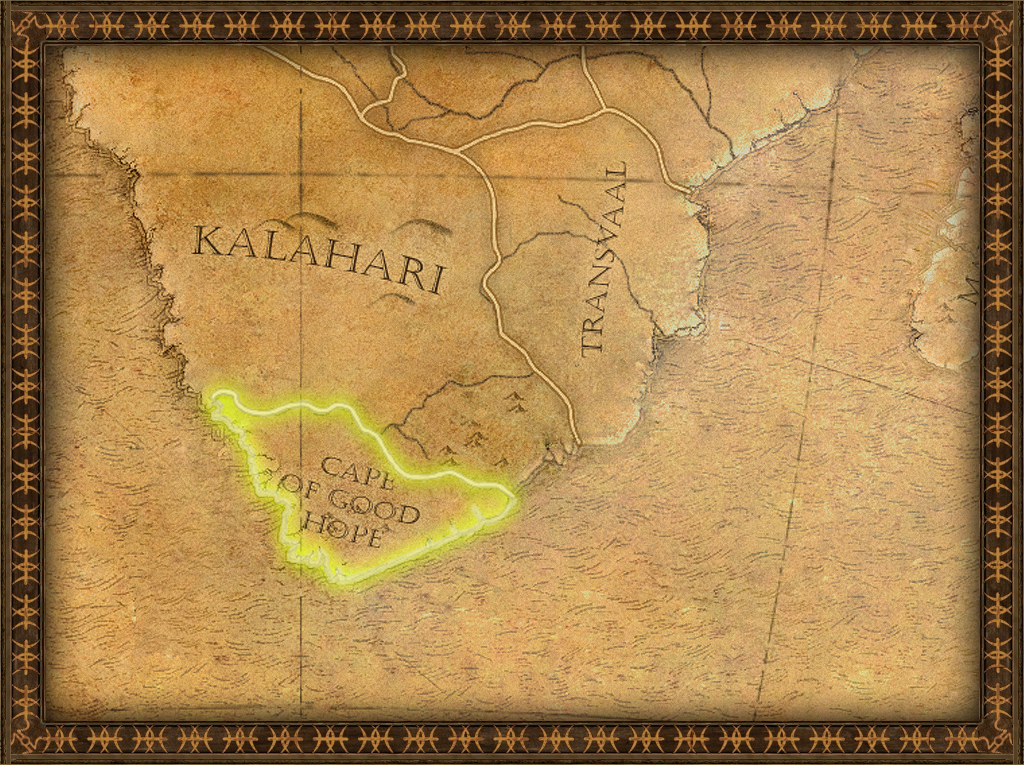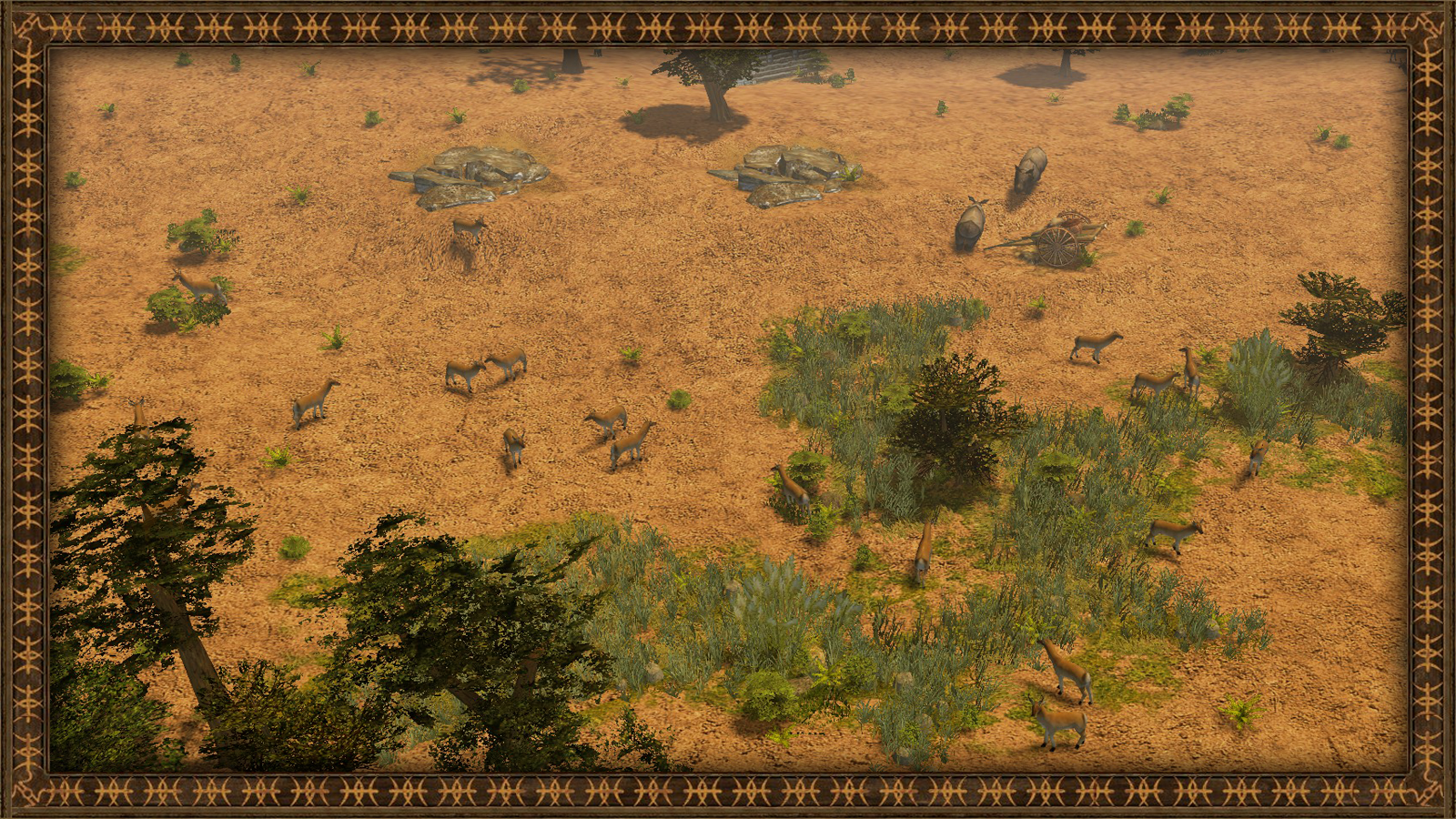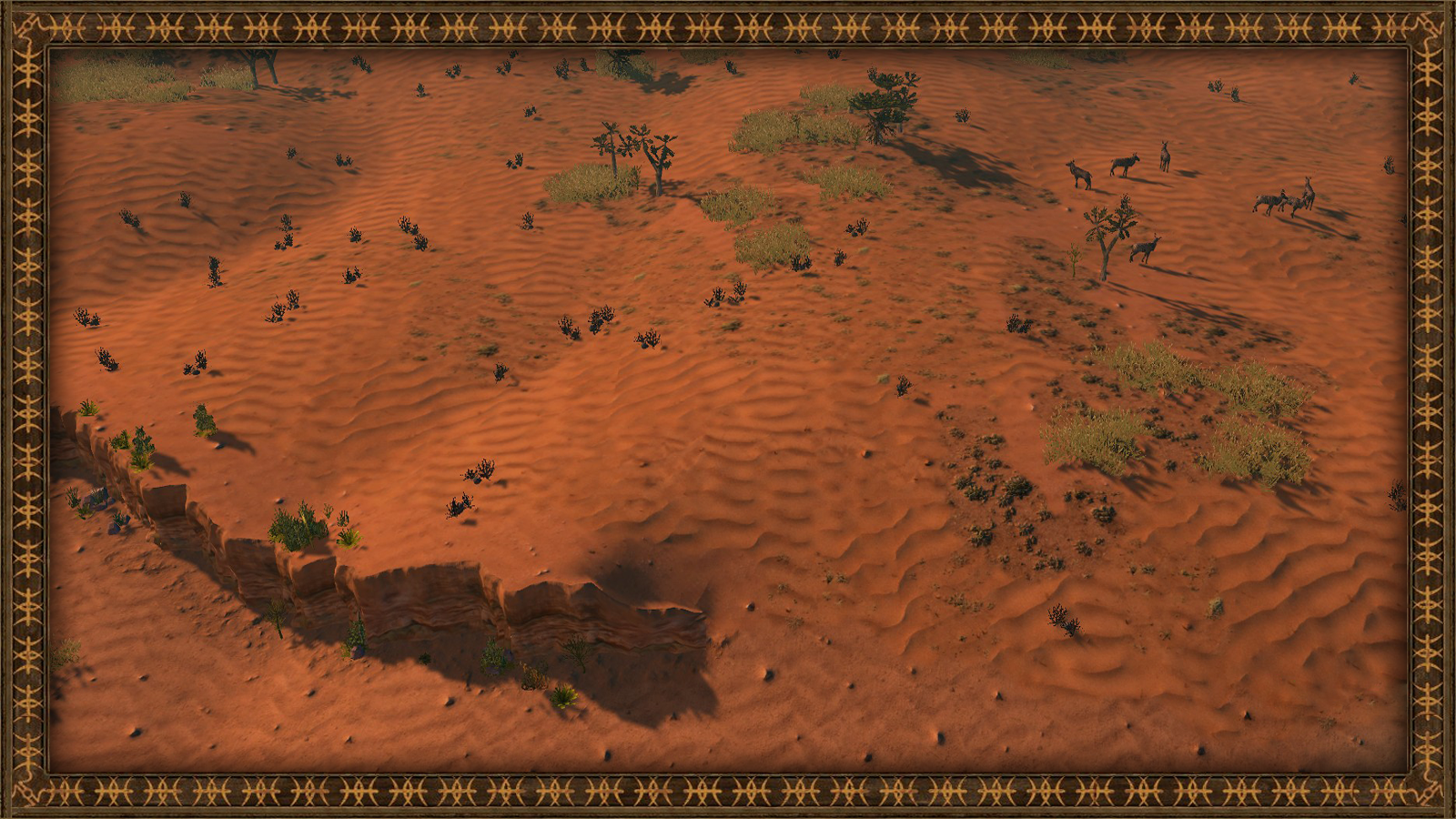Cape of Good Hope map showcase
We will have an in-depth look at yet another African random map featured in the mod - Cape of Good Hope.
Background
Cape of Good Hope is a headland on the Atlantic coast of the Cape Peninsula, and used to be considered the southern tip of Africa. This name initially referred to the whole region that this random map is based on, and the term used nowadays would be Cape Province of the RSA. Surrounded by the sea in the South and the Kalahari desert in the North, this region has a unique history, biodiversity, and natural beauty.
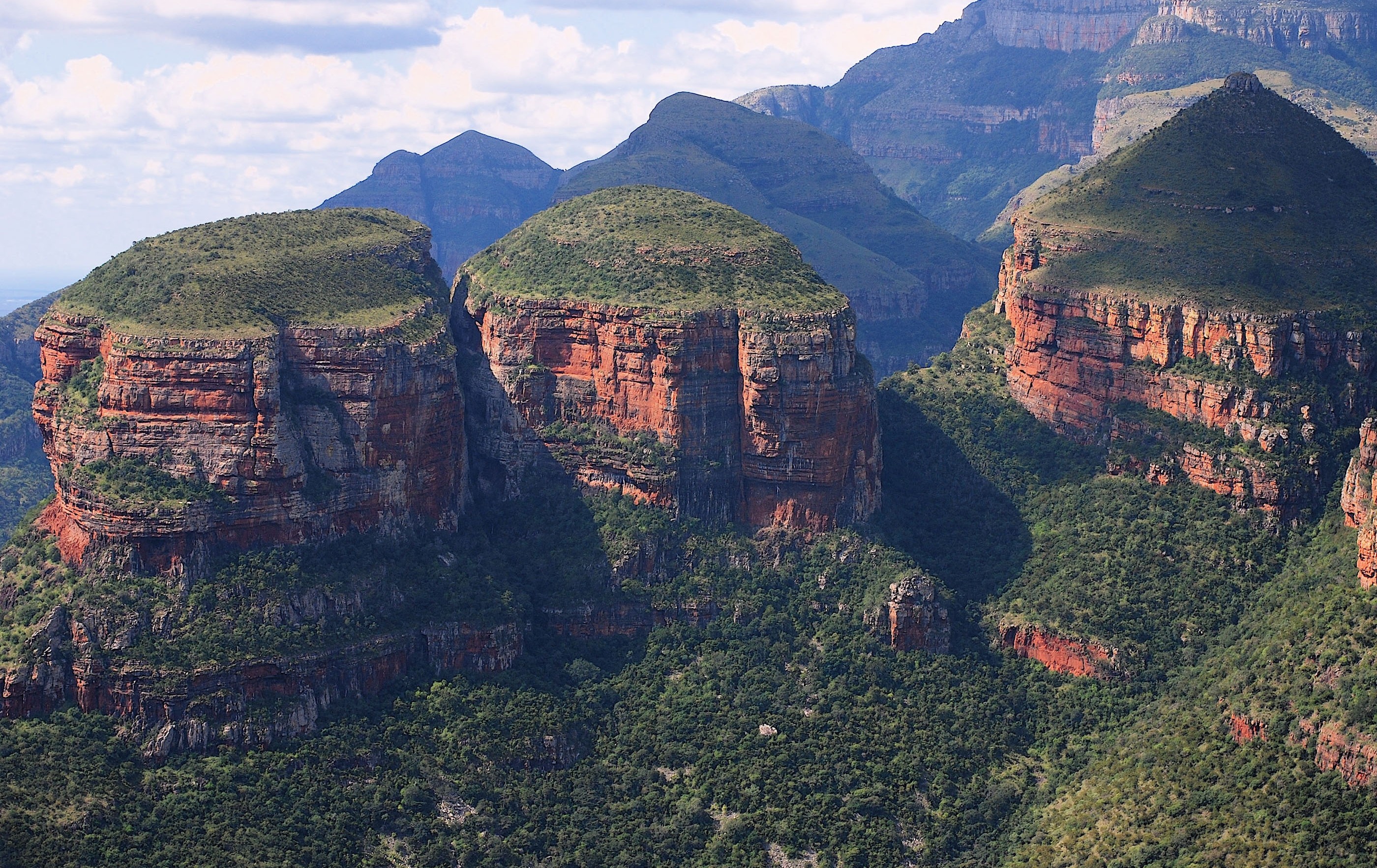
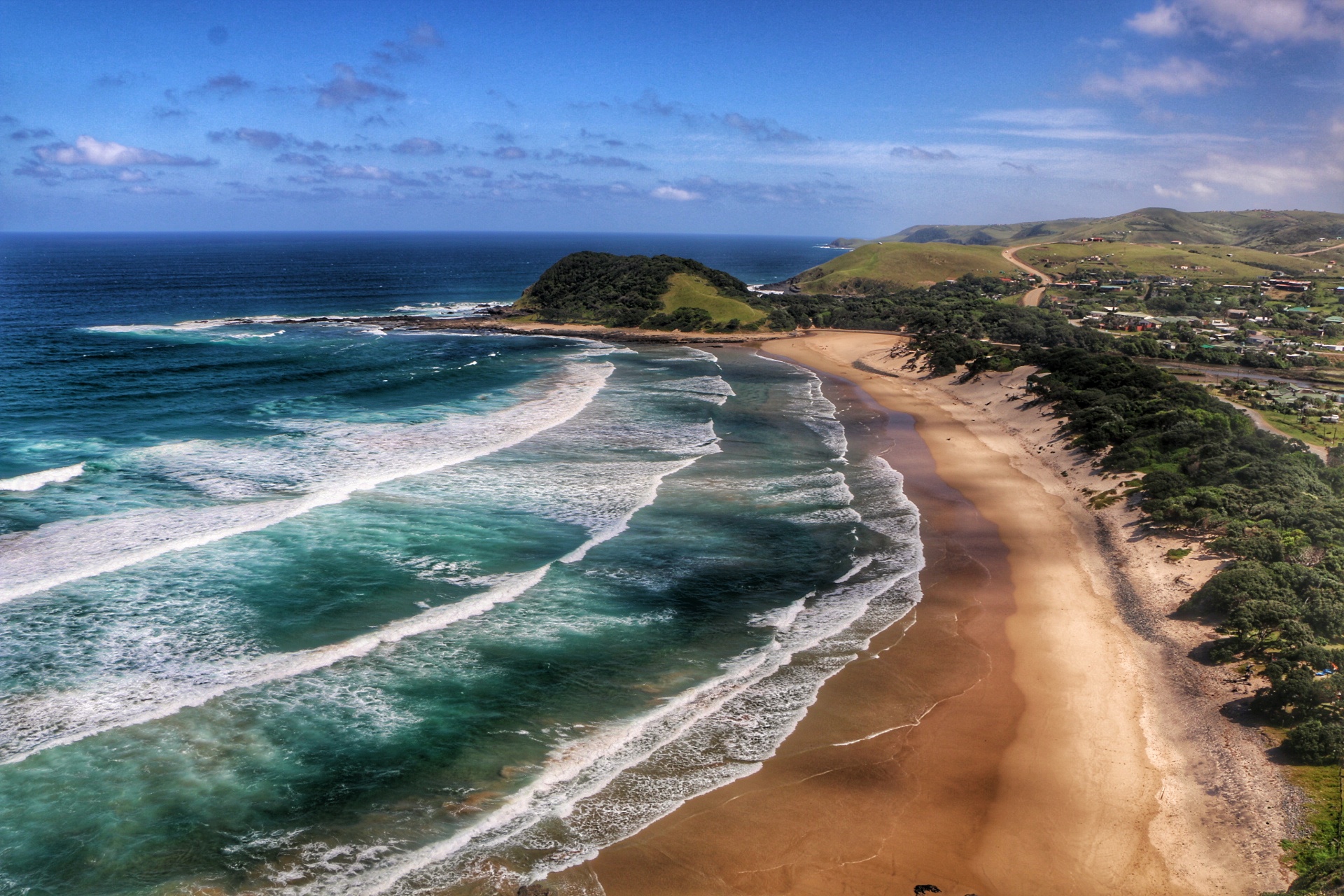
Random generation
Player teams start in the East and the West close to the Atlantic Ocean in the South. In the North there is a gradually ascending series of plateaus, which used to be referred to as "high velds" (from the Dutch word for "field") - savanna grasslands of the Kalahari desert with scarce resources, especially wood.
There are two types of native villages - the Zulus in the North and the Tswana in the center. There are one or two villages of each people, depending on the number of players. In case of a FFA the Tswana villages are placed near the edges of the map rather than in the center.
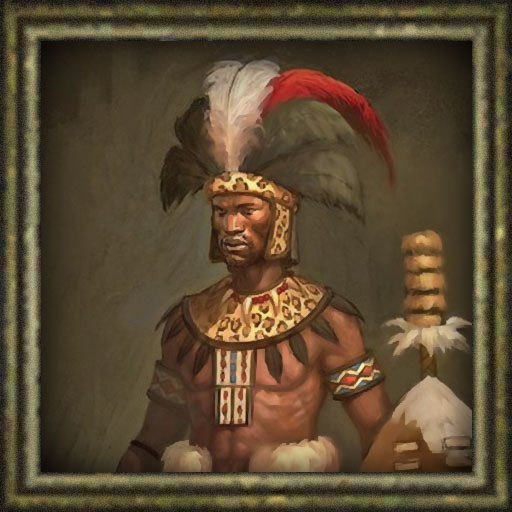
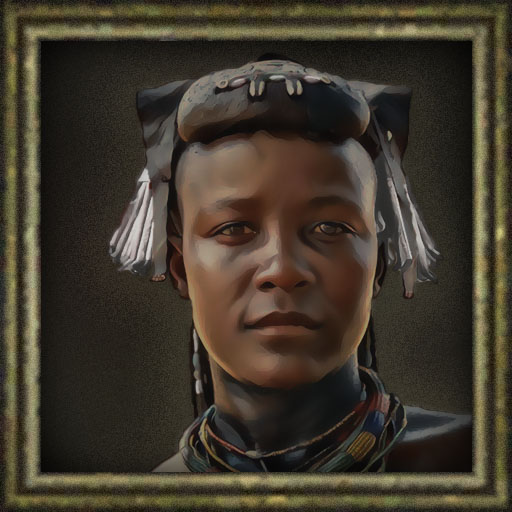
Two trade routes converge to the center, skirting the northern plateau. Each route has two to three trading post sites. In a free for all game the trade routes stay further from the players, sticking to the veld.
In a FFA configuration, players are placed in a horizontal line. For a King of the Hill game, the monument is placed right between the trade routes' ends, slightly north of the map center.
Terrain and biome
The terrain used for this map is partly North Araucania, partly custom African terrain, namely Kalahari and South Africa. The ground texture is reddish sand and occasional grass patches.
Animals, cliffs, as well as some of the trees and treasures have been specifically created for this African environment.
The animals found on the map belong to either two species out of three: Wildebeest, Impala and Eland.
Resources
Food
Each player starts with two huntable herds.
- The closer herd consists of around 9 animals.
- A farther herd contains 4 to 9 huntables, usually around 8.
- One more herd of 7-9 animals can be found in the veld to the North.
The animals in these herds can be either of three: Wildebeest (Gnu antelope), Eland or Impala. They have 450, 400 and 350 food per animal respectively.

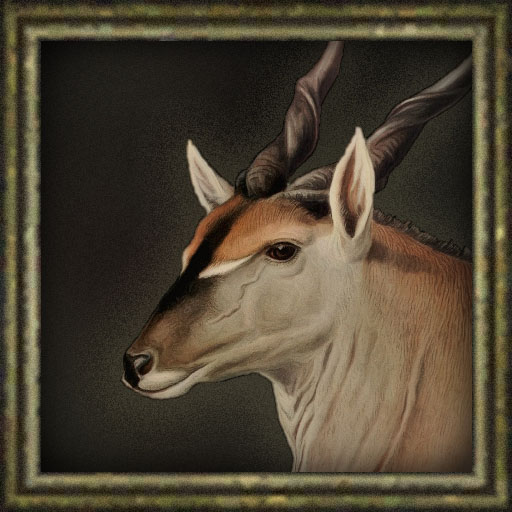

There are some fish in the ocean, as well as a couple of Humpback Whales. Herdable animals scattered around the map (excluding the veld) are of the African Buffalo species. There are no berries.
Wood
Each player has 2-3 decent forests that allow for a sustainable production of wood up until the Fortress age. At this stage wood usually becomes scarce, and the players might have to venture to the velds for more wood in the lategame. However, forests are very meager and small in the North. Wood is a resource to compete for on this map.
Coin
Each player starts with two Silver Mines nearby. Other coin mines are scattered all around the map. The map has an adequate amount of gold, including about 1 whale per player. Coin should not be a problem on the map.
Gameplay and strategy
Map openness and insufficient forests make games on this map somewhat hectic. Turtling is not really an option, as there are not natural defences and the resources are scarce. Trading post sites are close enough to the players to grab them in the early stages of the game, but they are open to raids nonetheless. The same is true about the huntables.
The proximity of various native villages make a native rush possible. Water control can be important, but it is unlikely to provide a water boom potential, and it probably won't be your focus.
With insufficient starting food and wood, one can be sure to find villagers farther north in the later stages of the game. Keeping that in mind will allow for raiding enemy settlers that are far from their colony.
The gameplay may be similar to Carolina or Patagonia in some ways, but it has a lot of unique elements. Its resource scarcity, veld position and native peoples differentiate the gameplay. Overall, it is a more stressful map to play, and aggressive playstyle is usually rewarded.
There will be one more map showcase article soon, so follow the mod and stay tuned not to miss it. As always, share your thoughts and suggestions in the comments - it is always appreciated!
